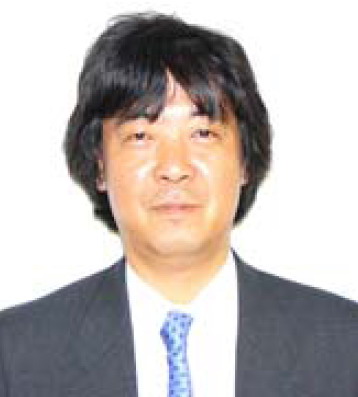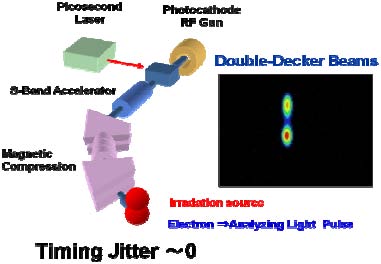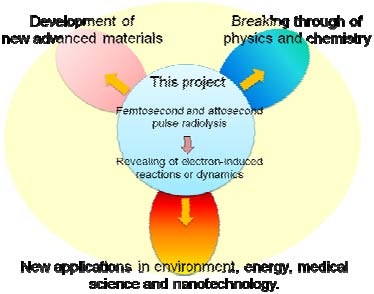日本Osaka University的Yoichi Yoshida(吉田陽一)教授和杨金峰博士将于近日到访科大。他们的学术报告定于5月14日(星期二)上午9:00在微尺度国家实验室(十八层大楼)9004会议室举行。欢迎各位老师及研究生参加!
附:1. Yoichi Yoshida教授简介:

附:1. Yoichi Yoshida教授简介:

Prof. Yoichi Yoshida got his Ph.D degree in the University of Tokyo in 1987. He is now the vice director of the Institute of Scientific and Industrial Research (ISIR), Osaka University and Director of Nanoscience Nanotechnology Center, ISIR. His research interests involve:
Accelerator science, quantum beam science, nanotechnology
Attosecond and femtosecond radiation-induced reactions
Basic process of nanofabrication
Attosecond physics
Accelerator science, quantum beam science, nanotechnology
Attosecond and femtosecond radiation-induced reactions
Basic process of nanofabrication
Attosecond physics
【Purpose and Background of the Research】
The reveal of hidden ultrafast reactions or phenomena in material is essential to the creation of new materials or devices, and to the development of new technologies or processes. The pulse radiolysis based on a short-pulse electron beam and an ultrashort laser light is a powerful tool to study the ultrafast electronbeam-induced reactions or phenomena. However, the time resolution is still stopped in the picoseconds or sub-picosecond time region because of electron pulse and other limitations.
The reveal of hidden ultrafast reactions or phenomena in material is essential to the creation of new materials or devices, and to the development of new technologies or processes. The pulse radiolysis based on a short-pulse electron beam and an ultrashort laser light is a powerful tool to study the ultrafast electronbeam-induced reactions or phenomena. However, the time resolution is still stopped in the picoseconds or sub-picosecond time region because of electron pulse and other limitations.
In this project, a femtosecond/attosecond pulse electron beam will be generated. The new techniques of a double-decker electron beam and an equivalent velocity spectroscopy are proposed to break the time resolution limitations. A new pulse radiolysis in the femtosecond and attosecond time region is constructed and used to reveal the hidden electron-induced reactions in material.
【Research Methods】
The following researches are carried out for the next pulse radiolysis in the femtosecond and attosecond time region:
(1) Generation and measurement of femtosecond and attosecond electron beam
(2) Pulse radiolysis based on double-decker electron beam accelerator
(3) Equivalent velocity spectroscopy
Finally, the pulse radiolysis is used to reveal the hidden electron-induced reactions in material on the femtosecond and attosecond time scale.
The following researches are carried out for the next pulse radiolysis in the femtosecond and attosecond time region:
(1) Generation and measurement of femtosecond and attosecond electron beam
(2) Pulse radiolysis based on double-decker electron beam accelerator
(3) Equivalent velocity spectroscopy
Finally, the pulse radiolysis is used to reveal the hidden electron-induced reactions in material on the femtosecond and attosecond time scale.

Fig. 1 double-decker electron beam accelerator system for pulse radiolysis
【Expected Research Achievements and Scientific Significance】
The high-brightness electron beams with ultimate low-emittance and femtosecond or attosecond bunch length, which is developed in this project, are also key elements for new developments in accelerator physics. The pulse radiolysis will open firstly the femtosecond and attosecond time-resolved measurement. The hidden dynamics of intricate molecular and atomic processes in material is expected to be revealed through the experiment.
The research achievements (Fig. 2) will open the study and development of new advanced materials in the fields of environment, energy, medical science and nanotechnology.

Fig.2 Expected research achievements and scientific significance
【Publications Relevant to the Project】
・J. Yang, T. Kondoh, K. Norizawa, Y. Yoshida, S. Tagawa, “Breaking Time-Resolution Limits in Pulse Radiolysis”, Radiat. Phys. Chem., in press (2009).
・A. Ogata, T. Kondoh, J. Yang, A. Yoshida, Y. Yoshida, LWFA of Atto-Second Bunches for Pulse Radiolysis, Int. J. Modern. Phys. 21, 447-458 (2007).
2. 杨金峰博士简介
Dr. Jinfeng Yang got his Ph.D. degree in Tokyo Metropolitan University in 1997. He became the associate professor of the Institute of Scientific and Industrial Research, Osaka University, in 2007. He won President’s Prizes of Sumitomo Heavy Industries Ltd. twice (1999, 2002) and Nishikawa Prize of Foundation for High Energy Accelerator Science, 2006. Since 1997, Dr. Jinfeng Yang has worked on the development of compact electron accelerator and its applications. In 2002, he succeeded in generating a 1.2 mm-mrad ultralow emittance electron beam using photocathode RF gun. In 2009, he has successfully developed an ultrafast pulse radiolysis with 240-fs time resolution (world record), and has initiated the first experimental study of radiation chemistry in the femtosecond time region. From 2009, he focuses on the advanced development of femtosecond time-resolved electron diffraction & microscopy for the study of ultrafast dynamics in materials.
p2.jpg
p1.jpg
Yoichi Yoshida.jpg
